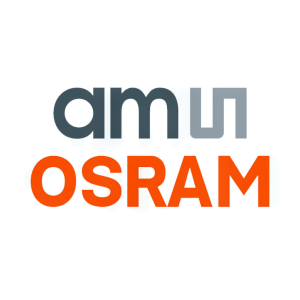New 256-channel ADC From ams OSRAM Reduces Power and Design Complexity in High-performance CT Detectors
- AS5911 in 14mm x 14mm FBGA is a system-in-package solution for current-to-digital conversion of 256 photodiode outputs
- Per-channel power consumption of 1.25mW minimizes self-heating in the CT detector and reduces thermal management requirements
- Best-in-class power to noise performance allows for the highest image quality of next generation CT scanners
- AS5911 ADC is set to play a key role in next generation of high-performance medical and security CT scanners demanding reduced complexity at superior performance
PREMSTAETTEN,
The AS5911, housed in a 14mm x 14mm FBGA, is a system-in-package solution that performs simultaneous current-to-digital conversion of the outputs from 256 photodiodes in a CT detector.
Smaller than current competing specialist ADCs for CT detectors, the AS5911 has a reduced footprint that facilitates its integration in a variety of detector form factors, including 4-side buttable solutions thanks to its reduced external bill of materials (BOM) and embedded components. The AS5911 leads to lower system complexity by having integrated LDO voltage regulators, reference voltages, a temperature sensor, supply decoupling capacitors and on-chip calibration features.
The power dissipation is yet an additional significant benefit of the AS5911. At just 1.25mW per channel in low-power mode, it consumes less power than existing products on the market. Its low power consumption facilitates temperature stabilization strategies by CT scanner manufacturers, ultimately yielding better system performance and potential savings in thermal management.
The ams
The AS5911 features on-chip calibration functions for parameters such as offset voltage, linearity, offset charge and leakage current. This allows to automatically set the photodiode and the front-end at their ideal operating point, compensating for offsets and non-linearities of the signal chain. The embedded auto-calibration functions reduce development effort in the data acquisition system and potentially enable the use of a lower-cost FPGA requiring less computational power.
The reduction of complexity of CT detector module design is also supported by features such as built-in diagnostics and the freedom to operate the device in two different power supply strategies. The device can operate in true ground mode and single analog supply. Full-scale range, power modes and digital readout features, are configurable over a SPI-compatible serial interface, as well as the data output modes of the digital LVDS interface.
The AS5911 is available for sampling now. Evaluation boards are available directly from ams
For sample requests or for more information, please visit our website.
View source version on businesswire.com: https://www.businesswire.com/news/home/20230202005459/en/
For further information
Tel.: +49 151 27670184
press@ams-osram.com
Source: ams







